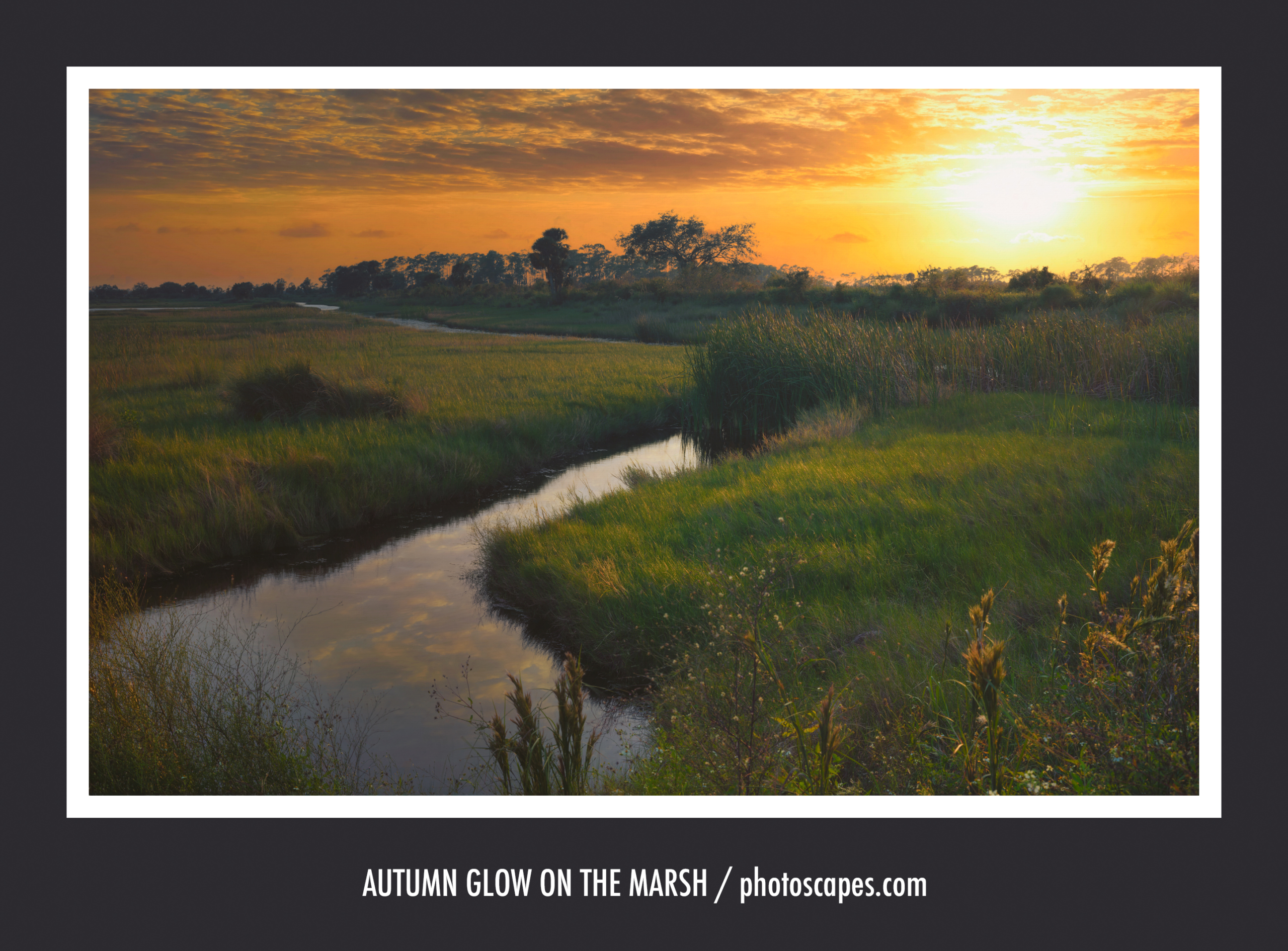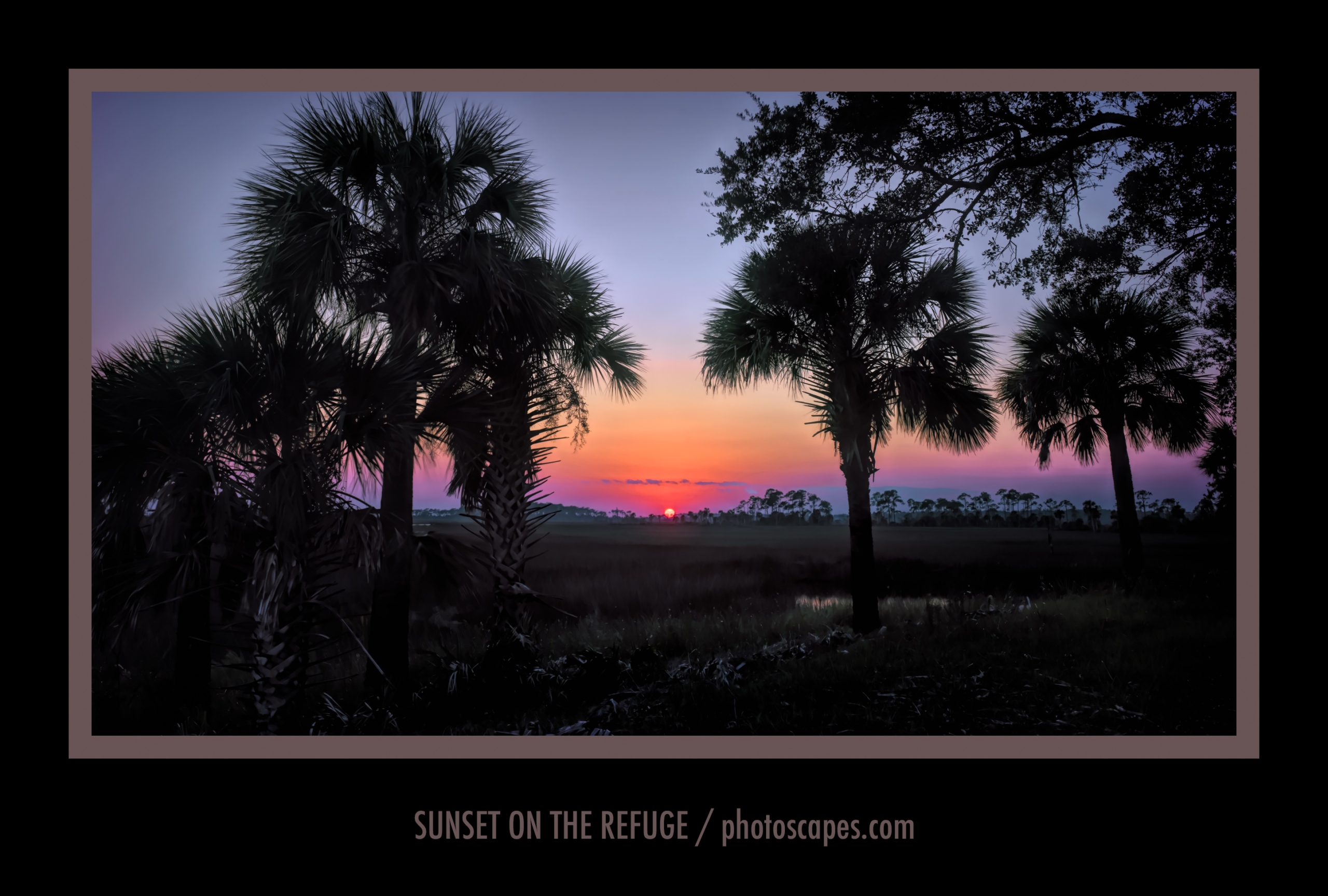Camera: Alpa STC Lens: Schneider Digitar 5.6/72 L Digital: 50 MP [44x33] CMOS Software: Adobe Lightroom
Location: St. Marks NWR, FL Date: October 2024 Lighting: Daylight Genre: Landscape
On the evening of Thursday, September 26, 2024, at around 11 p.m., Hurricane Helene swept through Tallahassee, Florida. My neighborhood endured the force of tornadoes that toppled countless trees, leaving behind a landscape of destruction. My property lost eleven trees, but thankfully, unlike some of my neighbors, none struck the house.
I chose to live here close to St. Marks National Wildlife Refuge, a place that has captured my heart since I first visited in the early 2000s. It has over 86,000 acres and covers about 43 miles of north Florida’s Gulf coast. Back then, I was living in Miami-Dade County when I stumbled upon this haven, a place I promised myself I would retire to. It was paradise to me, a sanctuary where I could spend the rest of my life photographing its wild beauty.
After Helene’s Fury
About two weeks after Helene’s fury, I returned to St. Marks NWR to see how it had weathered the storm. I’d read in the local paper that while the refuge had sustained some damage, it fared better than Tallahassee and other surrounding areas. I arrived about two hours before sunset, the time of day when the light begins to soften, and nature seems to take a breath. I didn’t venture far into the refuge—just to a familiar spot where I had spent countless hours over the years. To my relief, the area had suffered minimal damage. A few palm trees had lost their crowns, and the wildlife was scarce, but the refuge remained as beautiful and welcoming as ever to my eyes.
I parked on a dirt road nearby, and as I often do, I wandered the area with my Linhof Variable viewfinder in hand, searching for the perfect composition. Once I found it, I returned to the van to gather my gear. Inside my PortaBrace sack pack was my ALPA STC with the Hasselblad CFV II 50c back attached, nestled in a small cube. A Gnass two-lens case held my ALPA Schneider 35/5.6 XL Digitar and the 72/5.6 L Digitar lenses. My trusty Really Right Stuff Series 1 tripod, fitted with an Acratech Leveling Base and Quick Release, has been my steadfast travel companion for years.
Although I prefer using longer lenses, such as the 72mm, for landscapes, I always carry a wide-angle lens just in case. The ALPA STC’s rear lateral movements enable me to create image slices that will seamlessly stitch together. For the first image, Autumn Glow on the Marsh, I utilized three stitched frames. I carry a gimbal head in my landscape toolkit if I feel a scene calls for panoramic creation, but today, the autumn sun was already casting its magic, and I was ready to capture what I saw.
I love the simplicity of using an electronic shutter—no cables to fuss with—which has become my preferred method for landscape photography. With the ALPA-Schneider 72/5.6 L lens attached, I fine-tuned the camera placement for the shot and bracketed my exposures. About 15 minutes later, the sun was still above the horizon, so I packed up, moved my van further into the refuge, and set up for another chance to capture its descent.
Camera: Alpa STC Lens: SK Digitar 5.6/35 XL + CF Digital: 50 MP [44x33] CMOS Software: Adobe Lightroom
Location: St. Marks NWR, FL Date: October 2024 Lighting: Sunset/Twilight Genre: Landscape
Parking is always a challenge out here, with alligators lurking and snakes slithering through the grasses, but I know my favorite spots well enough to park safely and still take in the breathtaking views. After a short walk, I found the perfect place to watch the sun melt into the horizon, casting its final light over the refuge. The image below, Sunset on the Refuge, was captured using my Schneider 35/5.6 XL wide-angle lens with its center filter on. I didn’t use LCC (Lens Color Calibration), which is sometimes necessary with wide-angle lenses on a technical camera. A single frame, taken without any camera movements, just as the sun dipped low. The scene was alive with the sounds of nightfall—the gators calling, the air thick with evening’s song, all while the last traces of daylight painted the marsh in golden and pink hues.
Post-Processing
Back at home, I uploaded the images to Lightroom, and Autumn Glow on the Marsh came to life. The stitched frames merged effortlessly, thanks to the precision of the ALPA STC’s movements, resulting in a seamless, distortion-free image. This is what makes these cameras so exceptional, and while expensive, they are worth every penny once you experience their brilliance. There was no need for cropping or straightening—the image was exactly as the camera had seen it. A touch of color correction was all it took to bring out the warm glow of the autumn sun across the marsh grasses. I also toned down the clarity a bit to showcase the softness I experienced.
Post-processing Sunset on the Refuge was effortless. A simple lift of the shadows to reveal more depth and a slight crop was all it took, and I knew it was finished. In my landscape photography, my goal is always the same: to capture and evoke the emotions I feel when I am there, fully immersed in the beauty of the moment. I want to share those feelings with anyone who cares to see what I’ve carefully framed—slicing out a piece of my world to offer, with the hope it resonates with others.
Soon, the refuge’s grasses will turn golden as summer’s green fades away, and a new palette of beauty will emerge, with the sounds of nature all around. St. Marks NWR remains a place I am deeply in love with, a place I will never take for granted or grow tired of. Its beauty calls to me time and again.


